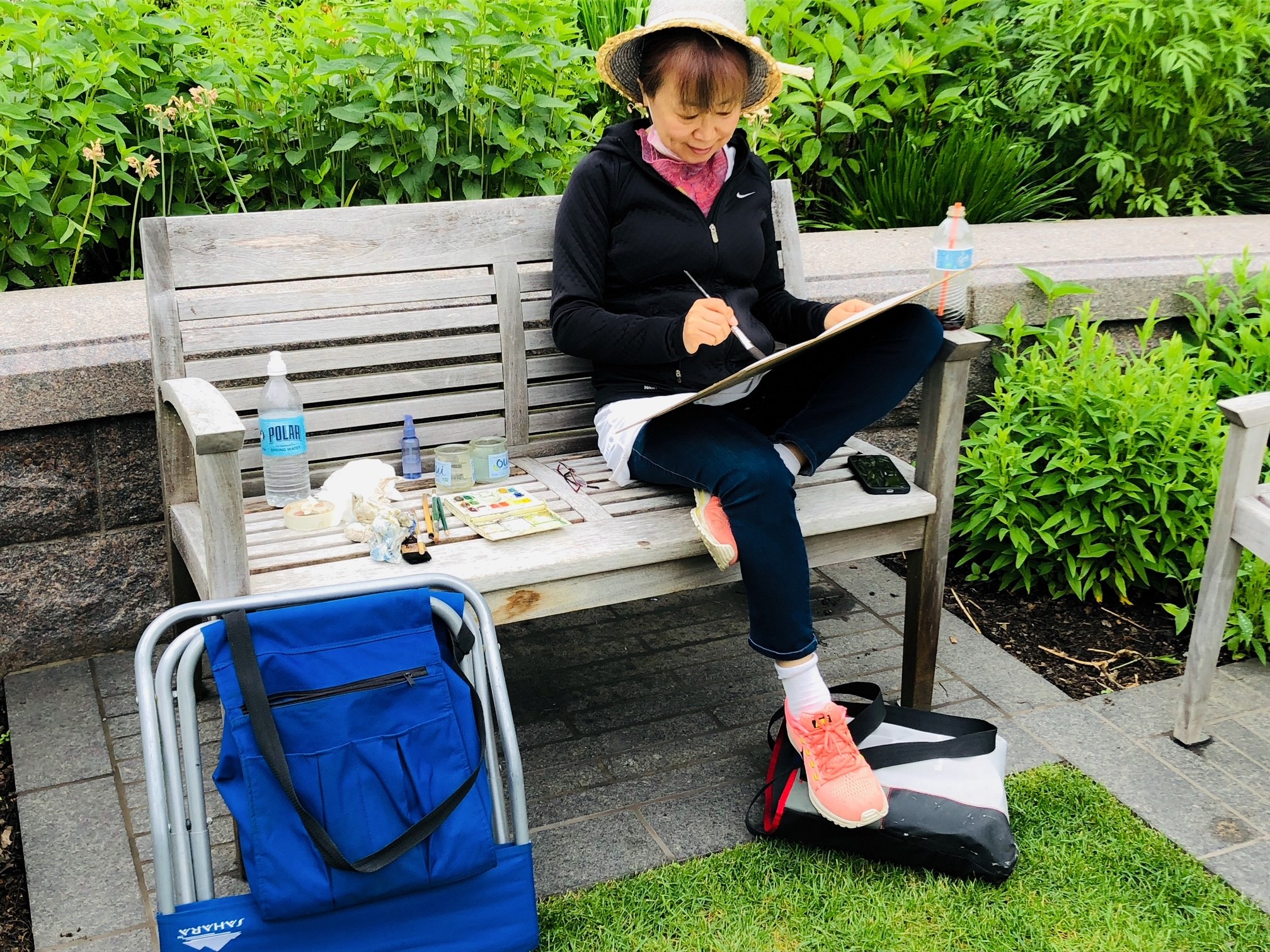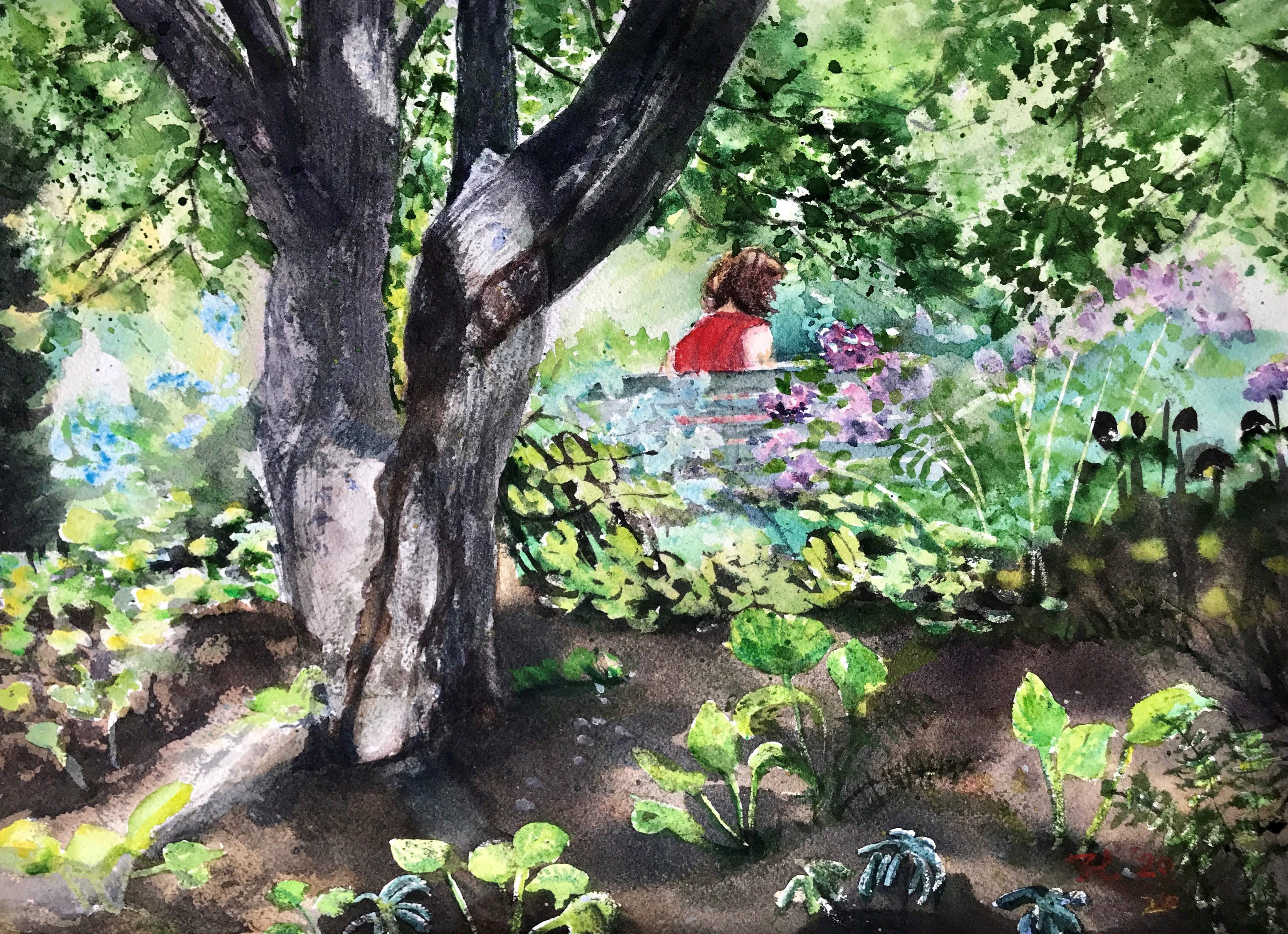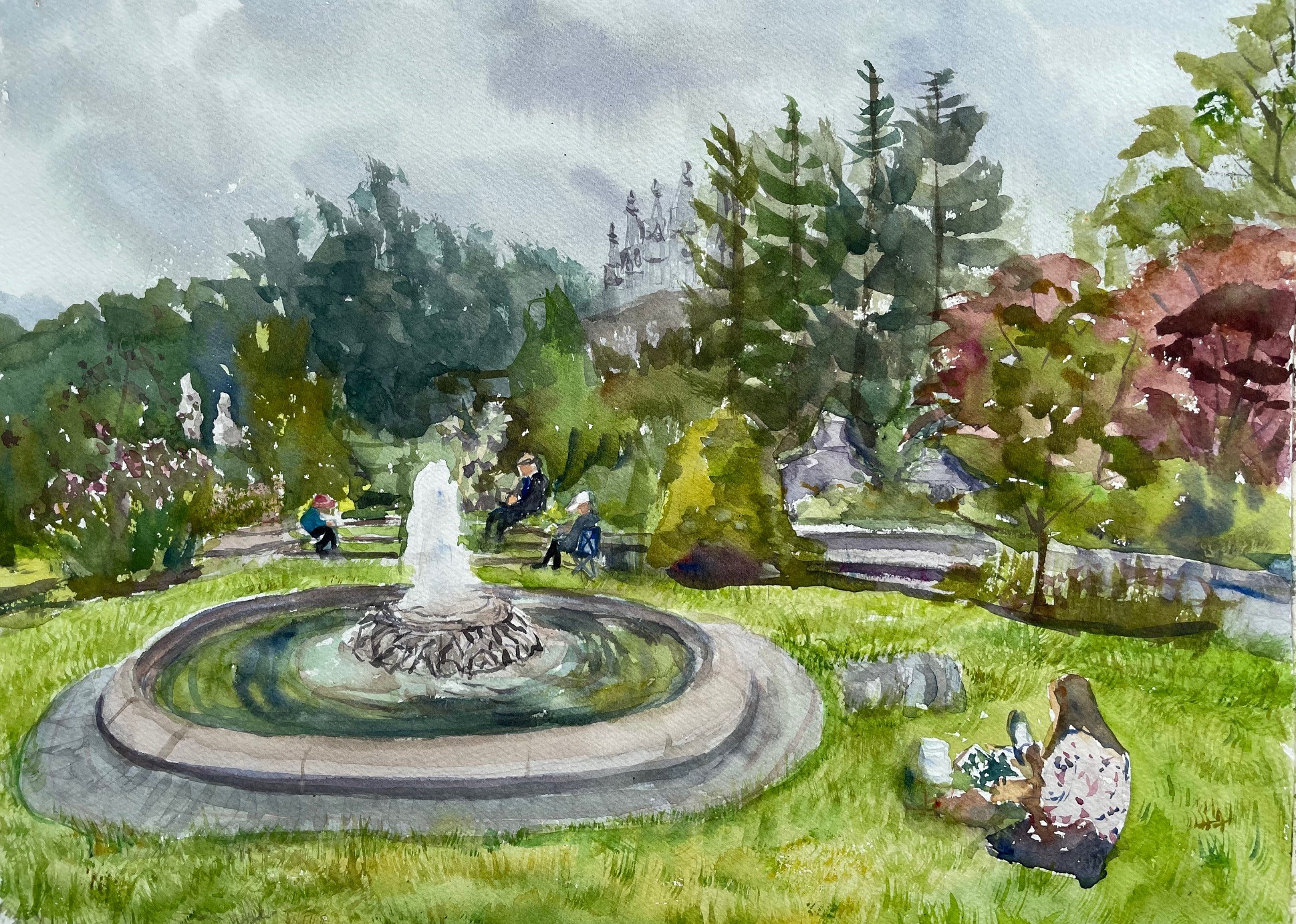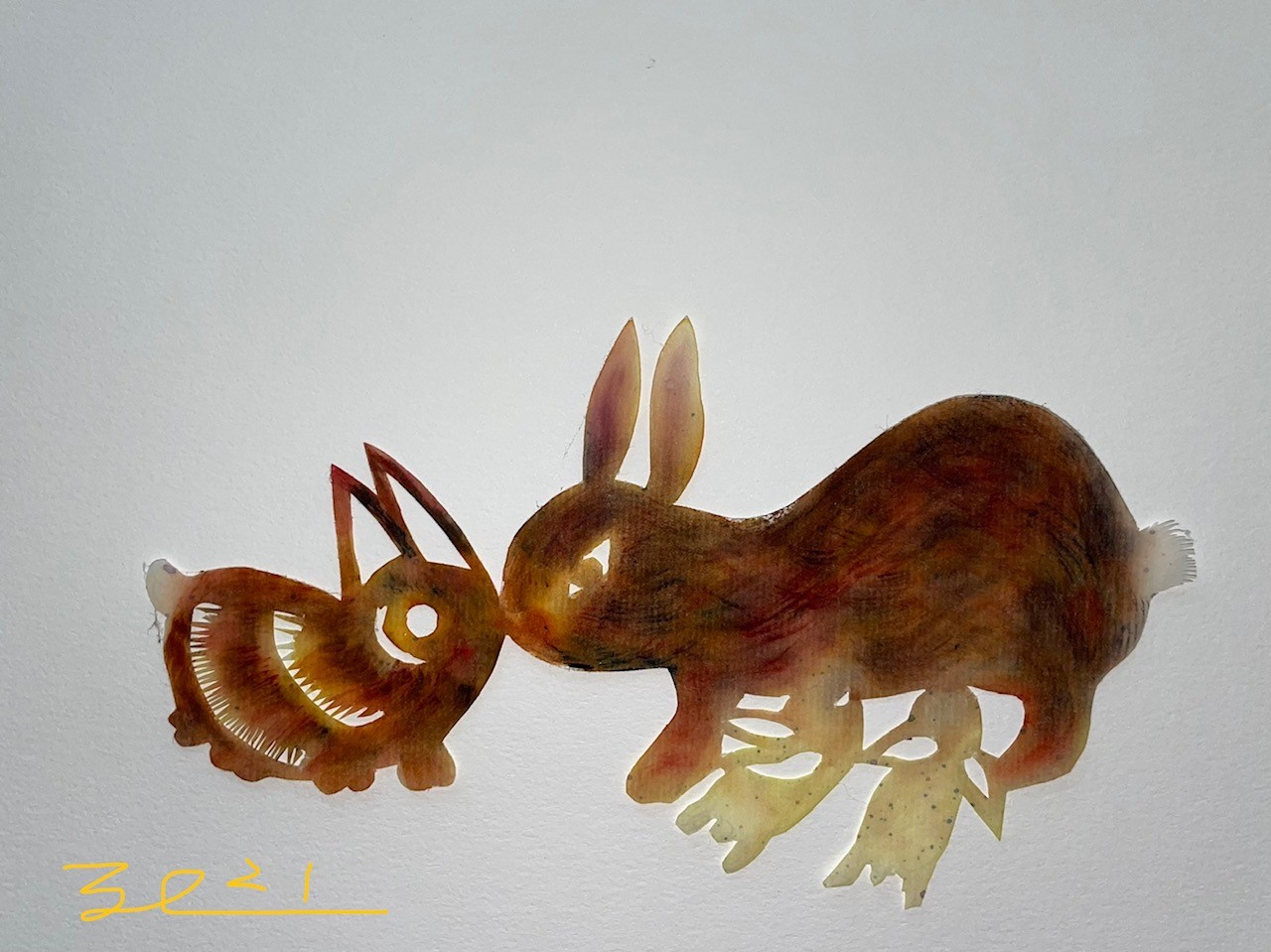Exploring the Balance of People and Nature with Zhonghe (Elena) Li
Jessica Bussmann July 1, 2021 Art

In 2021 we made mini-grants to five artists to create original works inspired by the Cemetery during a one-year period. Each of the selected artists will create an original project rooted in their experiences at Mount Auburn. Meet Zhonghe (Elena) Li and learn about her project, “The Art of Living Together.” This interview was originally published in July 2021.
______________________________
Tell us a little bit about yourself and your art.
As a person, I have always felt a deep connection with nature. To me nature is the source of spirituality and artistic inspirations. I cherish the Taoist wisdom of “being one with Nature” (“天人合一”) and the Yin-Yang balance. Diversity is a measure of balance, while over-dominance indicts a loss of balance. As an artist, art is a way to find my true self, a way to connect, a way to cure, and a way to express and make some impact. Through time, I have tried many different media and art forms, such as painting, drawing, papercutting, print making, book art, short film, animation, etc.
Tell us about your experience at Mount Auburn Cemetery during the COVID pandemic.
I have been drawn to the natural beauty and the statues and monuments at the Mount Auburn Cemetery for many years. But my deeper connection with the place developed during the COVID pandemic. I had taken walks almost daily last year after it was open to the public. My intimate observations of the plants and trees, my conversations with the red-tailed hawks and other creatures have helped to maintain my mental and physical wellbeing. Most importantly, Mount Auburn has become the source of my artistic inspirations, and I have done quite some pleinair watercolors here. And the project “The Art of Living Together” is born here as well.
Can you talk about the watercolors you paint in pleinair at Mount Auburn?
Although most artists now can paint from photos, Mount Auburn is a great place to observe trees, plants, sculptures, and wildlife. Some of my pleinair watercolors are studies of trees under certain light, or a scene in a specific season, or a statue surrounded by changing foliages. I have also observed people who came here to grieve, or to accompany a beloved one who had passed away. Several people were frequent visitors just as I was. I have tried to capture how humans interacted with the environments at Mount Auburn.
You can see the works at www.wildcraneblog.wordpress.com or follow me at hehe.li on Instagram.
Can you talk about your papercutting and multimedia art inspired by Mount Auburn’s wildlife?
I have chosen papercutting as one of the multimedia art forms because this was intimate to me when I was a child. In history, the skills were handed down from mothers to daughters and among women married in the same villages. It is an art form full of symbols of Yin-Yang balance and the interconnection of life forms. For example, an eagle catching fish or a hawk catching rabbit are symbols of Yin-Yang union and balance. In Taoist thinking neither eagle nor fish are good or bad but the balance. If you observe that eagle catches fish, you know that the water is not polluted and that there is fish in the stream. When a river such as the Charles River was polluted in history, there was the disappearance of fishes, and it became rare to observe eagles.
Mount Auburn has been dedicated to maintaining a great balance among the wildlife, plants, trees, and between life and death. To tell a positive story of Yin-Yang balance, biodiversity, and harmony between humans and nature, I think papercutting is one of the unique and relevant art forms.
If you are interested in finding out more about Chinese papercutting, please visit my videos at Wildcrane Art on YouTube.
How have your experiences at Mount Auburn changed over the past year, from spending time here independently during the pandemic to working on this new project? What have been the experiences that have stood out for you?
There are two major changes I’d like to share. First, like everybody else, social isolation for over a year is not easy. With the vaccine I understand that people want to go back to the “normal”/pre-pandemic activities, such as traveling and gathering with friends. I love travel and friends too. However, my experience in taking meditative walks and observing nature has made me realize that for the “suffering” we have had for over a year now, many species have been suffering much worse for a very long time by now. And by observing trees, I have seen how they have achieved Yin-Yang balance by extending up and down, and are beneficial in multiple ways. They clean up the air, they offer nests for birds and fruits for squirrels and chipmunks, and there is a whole cycle of life under their canopy, from insects to birds to hawks, etc. So when I feel an urge to travel and to get back to “normal,” I question myself: can I learn from the trees to be more patient and self-rooted? Is there not enough around me that I have not observed? Whether continuing to keep a low-key life style and accepting some degree of inconvenience should be the “new normal”? Trees do shed all their leaves in the fall and come back in the spring. Do we really need the “things” we think we need?
The second change is due to a sudden loss of a dear friend in April. When I proposed the project I talked about the interconnection of life and death, and how death is a different stage of being. It is easier said rationally than accepting the loss emotionally. After his passing, I have become one of the people who come to grieve and have made deeper connections with others who are grieving. And for the past two months it has been difficult to visit here, because last year during the social isolation, I had shared my paintings and photos of Mount Auburn on social media, and as an artist himself he had responded and commented often. He is by nature a Taoist person who dared not to play the majority’s game but his own. I know this loss is profound to me and it will be somehow shown in my project, although I don’t know how yet. It has already shown in some of my pleinair paintings.
You are working on another project in Cambridge, called “The Last Rhino.” Can you talk about that project? Does it relate to the project you are doing at Mount Auburn?
“The Last Rhino” project is about species extinction, partly grant-supported by the Cambridge Arts Council. It tells the potential consequence when Yin-Yang is out of balance, with one or a few forces becoming over-dominant, such as the force from us humans. It is related to “The Art of Living Together” at Mount Auburn in that both are stories of interconnectivity. We humans are interconnected with all other life beings on Earth. When we are in harmony with nature we will see diversity, and when we are out of balance we will witness species extinction and pandemic.
What is your favorite place at Mount Auburn?
I love to explore and find surprises, but I also have my routine path and stopping points. Some of them I expect to be revealed in my final project. I have many favorite places. To name one, it will be Willow Pond, because I must visit here every time in order to see the muskrat family, and to find the blue heron, green heron, bull frogs, frogs, turtles, and dragonflies.
What is your favorite season at Mount Auburn?
I love all four seasons because each has its unique characters, and interacts differently with the landscape. If I must name a favorite season I will say summer for its serenity and relative stableness. It’s also the best season for pleinair painting.




Comments